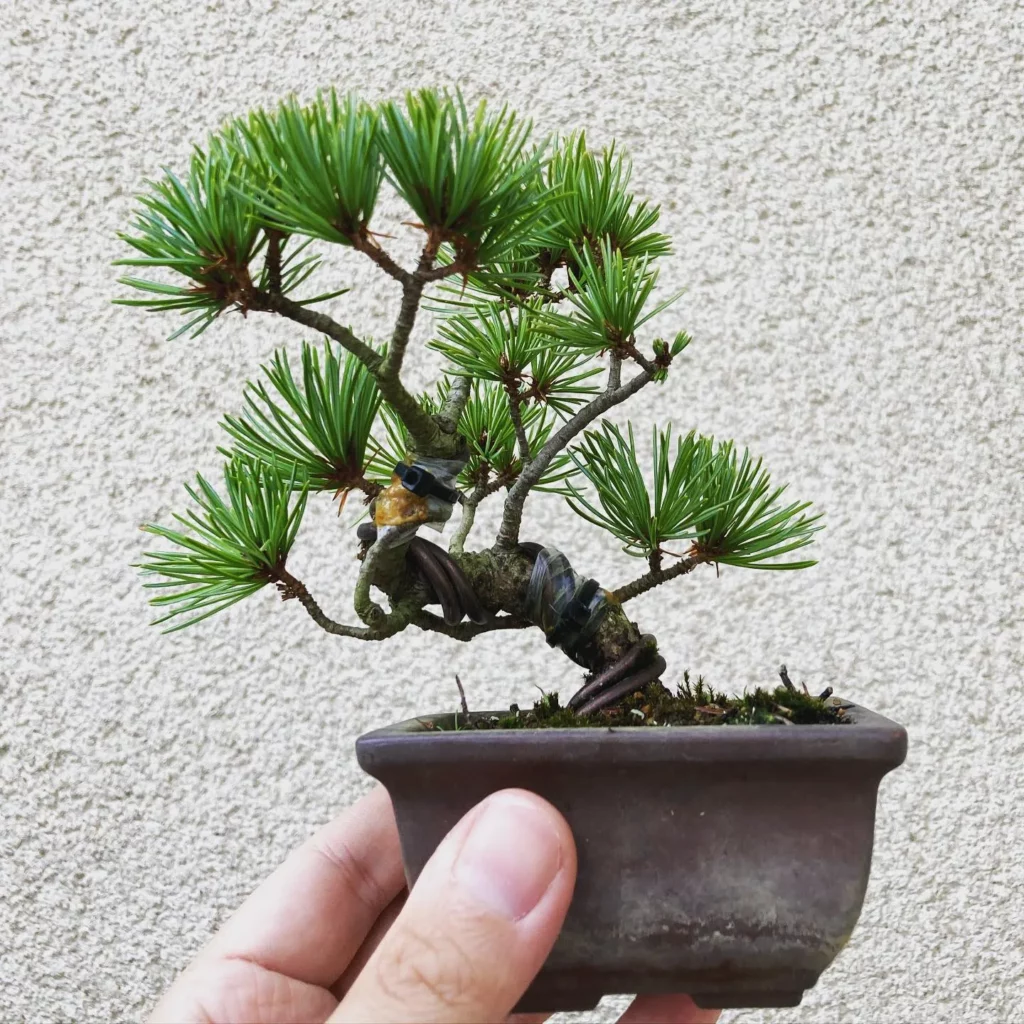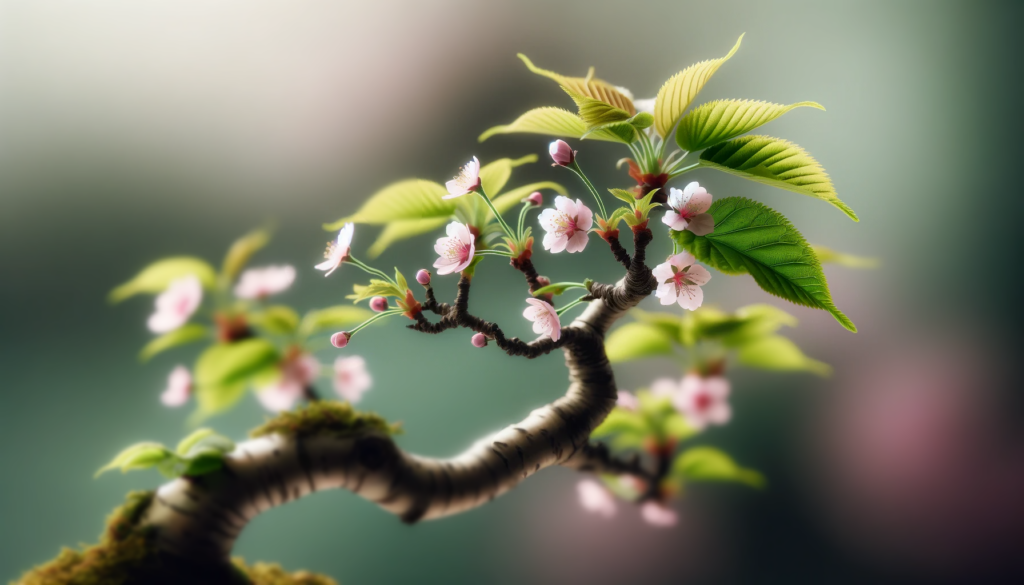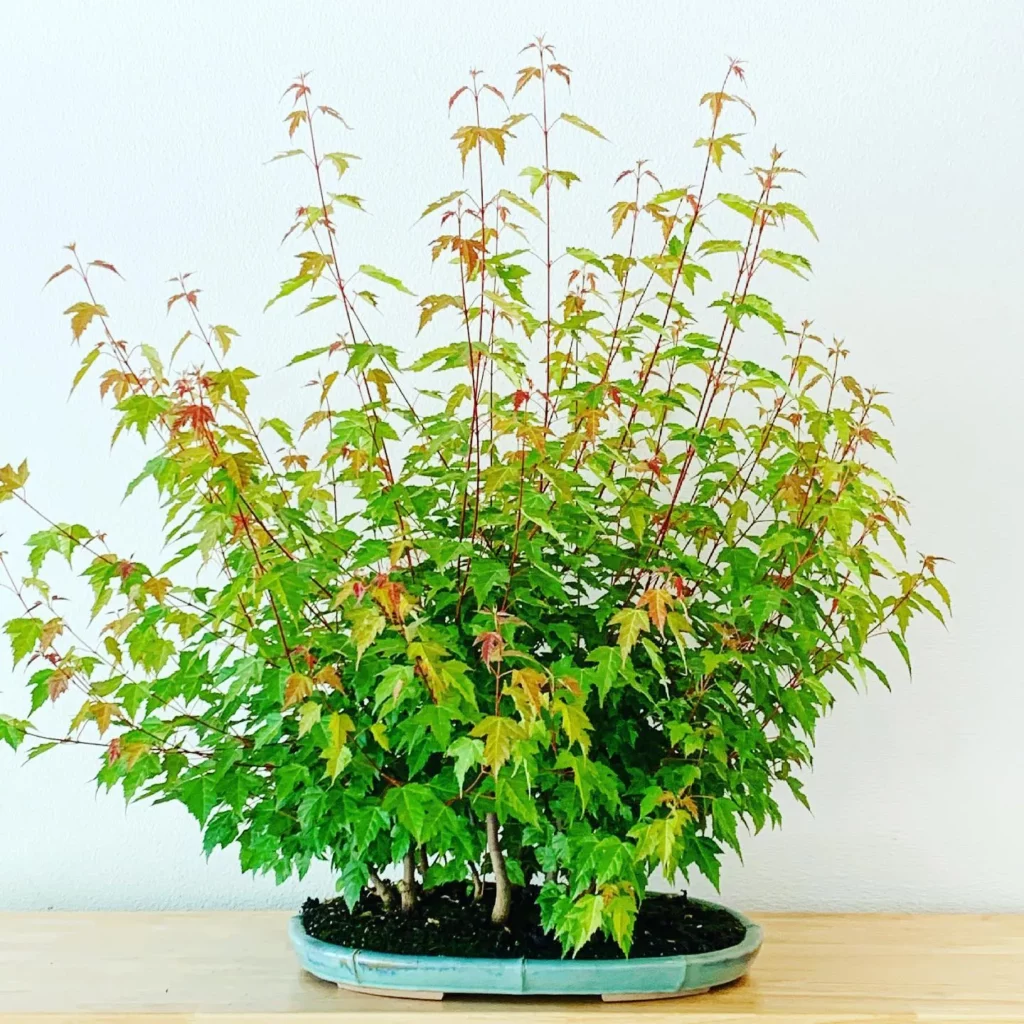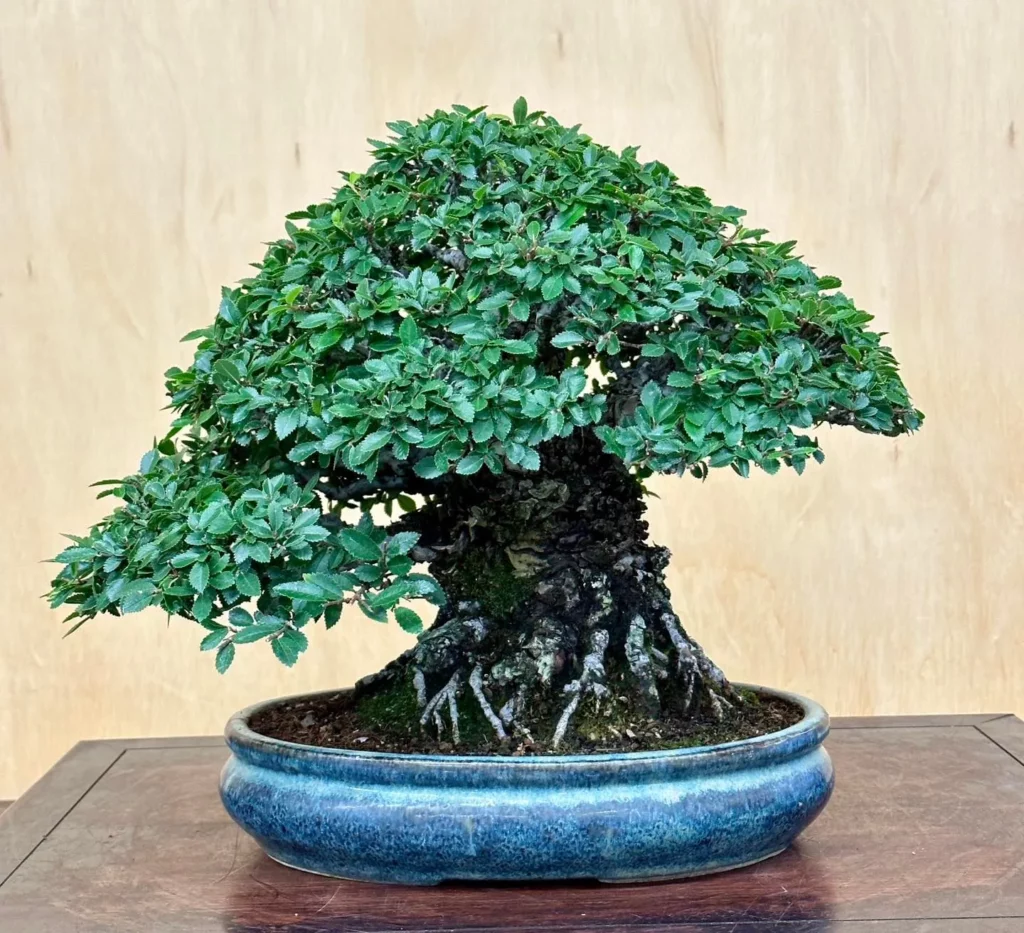Growing bonsai trees indoors can be a rewarding and beautiful addition to your home decor. With the right care and attention, these miniature trees can thrive indoors. In this article, we will provide you with a comprehensive guide to successfully growing bonsai trees indoors, including tips for selecting the right bonsai species and caring for them in an indoor environment. Our expert advice will help you cultivate the art of bonsai and create a tranquil and captivating ambiance in your home.
Selecting the Right Bonsai Tree for Indoor Growth

When it comes to growing bonsai trees indoors, selecting the right species is crucial for their success. Indoor bonsai trees require species that can thrive in an indoor environment, including those that can tolerate low humidity and do not require a period of dormancy. Tropical and subtropical trees are the best options for indoor bonsai growth.
Here are some popular indoor bonsai tree species that are well-suited for indoor environments:
- Ficus Bonsai: These trees are known for their vibrant green leaves and are great for beginners. They are adaptable to different light conditions and can tolerate indoor environments well.
- Dwarf Jade: Also known as “Portulacaria afra,” this tree has small, glossy leaves and a thick trunk. It is a resilient species that can tolerate drought and low light conditions.
- Fukien Tea: This bonsai tree species has small, dark green leaves and produces tiny white flowers. It is an excellent choice for indoor growth due to its ability to thrive in lower humidity levels.
- Hawaiian Umbrella: Also known as “Schefflera arboricola,” this tree has small glossy leaves and a unique umbrella-shaped canopy. It is a popular choice for indoor bonsai due to its adaptability to different light conditions.
- Sweet Plum: Also known as “Sageretia theezans,” this bonsai tree species has small, round leaves and produces small purple fruits. It is a hardy plant that can tolerate low humidity levels and is suitable for beginners.
Creating the Ideal Indoor Bonsai Environment

Creating the ideal environment for your indoor bonsai tree is crucial for its health and growth. Two key factors to consider are lighting and humidity control.
Lighting for Indoor Bonsai Trees
Bonsai trees require sufficient light to thrive. Placing your bonsai tree in a bright location near a south-facing window is recommended, as it provides the most natural light throughout the day. However, if natural light is insufficient, you can supplement it with artificial lighting.
- Fluorescent lights: These lights emit a broad spectrum of light and are a cost-effective option for indoor bonsai trees.
- LED grow lights: LED grow lights are energy-efficient and produce less heat, making them ideal for creating the right lighting conditions for your bonsai tree.
Humidity Control for Bonsai Trees
No products found.
Indoor bonsai trees require higher humidity levels compared to typical indoor conditions. Here are some methods to maintain the ideal humidity for your bonsai tree:
- Humidity tray: Placing your bonsai tree on a tray filled with pebbles and water helps increase humidity levels around the tree.
- Misting: Regularly misting your bonsai tree with water can help keep the foliage moist and create a more humid environment.
- Circulating air: Opening windows or using a fan to circulate air from outside can also help increase humidity levels around your bonsai tree.
Watering and Fertilizing Your Indoor Bonsai Tree

Proper watering and fertilizing are crucial for the health and vitality of your indoor bonsai tree. To ensure optimal growth and prevent root rot, it is important to know how to effectively water and fertilize your bonsai tree.
Watering Your Indoor Bonsai Tree
Watering your indoor bonsai tree requires careful attention and observation. The frequency of watering depends on various factors such as the size of the pot, tree species, and environmental conditions. Follow these guidelines to water your bonsai tree:
- Check the moisture level of the soil by inserting your finger about an inch deep into the soil. If it feels dry, it’s time to water the tree.
- Thoroughly water the bonsai until water starts to flow out of the drainage holes. This ensures that the entire root system is adequately hydrated.
- Avoid overwatering, as it can lead to root rot. Allow the soil to partially dry out between watering sessions.
Fertilizing Your Indoor Bonsai Tree
Fertilizing provides essential nutrients for the growth and development of your indoor bonsai tree. Here are some tips on fertilizing your bonsai:
- Choose an organic or synthetic bonsai fertilizer that is specifically formulated for indoor bonsai trees.
- Fertilize your bonsai tree during the active growing season, typically from spring to fall. Refer to the instructions on the fertilizer package for the recommended frequency and dosage.
- During the dormant period, reduce the frequency of fertilization to accommodate the tree’s slowed growth.
- Avoid fertilizing a dry bonsai, as it can damage the roots. Water the tree before applying fertilizer.
Choosing the Right Pot and Soil for Your Indoor Bonsai Tree

Choosing the right pot and soil is crucial for the successful growth and development of your indoor bonsai tree. Making the right decisions in these areas will contribute to the overall health and vitality of your bonsai.
Pot Selection:
- Choose a bonsai pot that is appropriate for the size and style of your indoor bonsai tree.
- Ensure that the pot has proper drainage holes to prevent waterlogged roots.
- Consider the aesthetic appeal of the pot, as it will be an integral part of the overall presentation of your bonsai tree.
Soil Considerations:
- Use specialized bonsai soil that provides good drainage and aeration for the roots of your indoor bonsai tree.
- Bonsai soil should consist of a mixture of soil components such as Akadama, pumice, and lava rock.
- Avoid using regular garden soil or potting mix, as they tend to retain too much moisture and can lead to root rot.
Repotting Bonsai Trees:
- Repot your indoor bonsai tree every few years to maintain root health and prevent the tree from becoming root-bound.
- Choose a slightly larger pot when repotting to allow room for root growth.
- When repotting, use bonsai-specific soil and ensure that the tree is placed at the same depth as before.
Providing Proper Lighting for Indoor Bonsai Trees
Since indoor bonsai trees do not have access to natural sunlight, ensuring they receive proper lighting is crucial for their growth and overall health. Here are some options for providing artificial lighting to your indoor bonsai:
1. Fluorescent Lights
Fluorescent lights are a popular choice for indoor bonsai lighting. They emit a broad spectrum of light that promotes photosynthesis and growth. Fluorescent lights are also cost-effective and readily available. Positioning the bonsai tree close to fluorescent lights ensures it receives the necessary light intensity for optimal development.
2. LED Grow Lights
LED grow lights have gained popularity in recent years due to their energy efficiency and ability to produce specific light wavelengths that cater to plant growth. These lights emit minimal heat, reducing the risk of overheating your bonsai tree. LED grow lights are available in various spectrums, such as blue for vegetative growth and red for flowering and fruiting stages.
When using artificial lighting for your indoor bonsai, it is essential to consider the light duration and intensity. Place the bonsai tree in a location where it can receive at least six hours of bright, indirect sunlight each day. This provides a balance between light exposure and rest periods for the tree, mimicking natural daylight cycles.
Maintaining Proper Temperature and Humidity for Indoor Bonsai Trees
Maintaing the proper temperature and humidity levels is essential for the well-being of your indoor bonsai tree. Most indoor bonsai trees thrive in temperatures between 60-75 degrees Fahrenheit during the day and 50-65 degrees Fahrenheit at night. Avoid placing the bonsai tree near heating or cooling vents to prevent drastic temperature changes.
Temperature Control
To maintain an optimal temperature for your indoor bonsai, it is important to consider the following:
- Avoid placing the bonsai tree near sources of direct heat or drafts, such as radiators or open windows.
- Ensure that the temperature remains consistent throughout the day and night to provide a stable environment for your bonsai.
- Regularly monitor the temperature in the area where your bonsai is located to make necessary adjustments.
Humidity Level Management
Proper humidity levels are crucial for the health of your indoor bonsai tree. Here are some tips to manage humidity:
- Place a tray filled with pebbles and water underneath your bonsai pot to create a humid microclimate around the tree.
- Use a humidifier to increase the overall humidity in the room where your bonsai is kept.
- Mist the foliage of your bonsai tree regularly to provide additional moisture.
Understanding Bonsai Tree Watering and Fertilizing Techniques
Proper watering and fertilizing techniques are essential for the health and growth of your indoor bonsai tree. By following these tips, you can ensure that your bonsai thrives and remains vibrant:
- Watering Techniques: Water your bonsai tree when the soil feels dry to the touch, but avoid overwatering. Thoroughly water the tree until water begins to flow out of the drainage holes. This ensures that the roots receive adequate hydration without risking root rot. Different factors, such as pot size, tree species, and environmental conditions, will affect the frequency of watering.
- Fertilizing Bonsai Trees: Fertilize your indoor bonsai tree during the active growing season to provide it with essential nutrients. Choose fertilizers that contain the necessary macronutrients, such as nitrogen (N), phosphorus (P), and potassium (K). These nutrients promote healthy growth and overall tree health. Adjust the frequency of fertilizing during the dormant period to meet the tree’s specific needs.
Selecting the Right Bonsai Pot and Soil for Indoor Growth
Choosing the right bonsai pot and soil is essential for ensuring the successful growth of your indoor bonsai tree. When it comes to selecting a bonsai pot, it’s important to prioritize proper drainage. Opt for pots that have adequate drainage holes to prevent waterlogged roots and promote healthy growth.
Equally important is choosing the right soil for your indoor bonsai tree. Specialized bonsai soil is designed to provide excellent drainage while allowing sufficient airflow to the roots. This is crucial for maintaining a healthy root system and preventing issues such as root rot.
When it comes to repotting indoor bonsai trees, it’s recommended to do so every few years. Repotting helps refresh the soil, prevents the tree from becoming root-bound, and promotes optimal growth. When repotting, choose a slightly larger pot to accommodate the tree’s root system and ensure it has enough space to grow. Remember to use bonsai-specific soil during the repotting process.
No products found.
Key Points:
- Select a bonsai pot with proper drainage holes to prevent waterlogged roots.
- Use specialized bonsai soil that offers good drainage and airflow to the roots.
- Repot your indoor bonsai tree every few years to maintain root health and prevent root-bound trees.
- Choose a slightly larger pot during repotting and ensure the tree is placed at the same depth as before.
Caring for Indoor Bonsai Trees: Tips and Techniques
Caring for indoor bonsai trees requires attention to detail and proper techniques to ensure their health and vitality. Here are some essential tips and techniques to help you care for your indoor bonsai tree and enjoy its beauty for years to come.
- Regular pruning and shaping: To maintain the desired form and size of your bonsai tree, regular pruning is essential. Trim back excessive growth and shape the branches to create a balanced and aesthetically pleasing appearance.
- Wiring: Wiring is a useful technique for guiding the branches of your bonsai tree into the desired position. Use aluminum or copper wire to gently shape the branches, being careful not to damage the bark.
- Pest and disease inspection: Regularly inspect your bonsai tree for any signs of pests or diseases. Look for pests such as aphids, mites, or scale insects and promptly address any infestations. Also, keep an eye out for signs of diseases such as fungal infections or leaf discoloration.
- Acclimation to light and temperature: Bonsai trees can be sensitive to changes in light or temperature. When moving your indoor bonsai tree to a different location, gradually acclimate it to the new conditions by exposing it to increasing amounts of light or adjusting the temperature gradually over a period of time.
The Benefits of Growing Bonsai Trees Indoors
Growing bonsai trees indoors offers numerous benefits that can enhance the beauty and ambiance of your home. These miniature trees serve as captivating decorative elements, adding a touch of natural beauty and tranquility to any room. With their intricate branches and lush foliage, indoor bonsai trees create a sense of serenity and peace, transforming your living space into a calm and inviting oasis.
But the advantages of indoor bonsai trees go beyond their aesthetic appeal. Cultivating and caring for these magnificent trees can also be a therapeutic hobby that promotes relaxation and mindfulness. The artistry and dedication required to shape and maintain bonsai trees provide a rewarding sense of accomplishment and a deep connection with nature. Watching your bonsai tree thrive under your care can be a source of joy and fulfillment.
Furthermore, indoor bonsai trees serve as living reminders of the beauty and resilience of nature. Amidst the hustle and bustle of daily life, these tiny trees symbolize the strength and perseverance found in the natural world. They can inspire a sense of wonder and appreciation for the small miracles that exist all around us. A home adorned with indoor bonsai trees reflects an appreciation for artistry and a deep respect for the harmony between humans and nature.
After this check out our other articles on:
FAQ
What are the best bonsai tree species for growing indoors?
The best bonsai tree species for growing indoors include the Ficus Bonsai, Dwarf Jade, Fukien Tea, Hawaiian Umbrella, and Sweet Plum. These trees are resilient and can thrive in the limited space of a bonsai pot when cared for properly.
How can I create the ideal environment for my indoor bonsai tree?
To create the ideal environment for your indoor bonsai tree, place it in a bright location near a south-facing window to ensure it receives sufficient light. If natural light is insufficient, supplement it with fluorescent or LED grow lights. Increase humidity levels using a humidity tray, misting the tree, or circulating air from outside.
What is the proper watering and fertilizing routine for indoor bonsai trees?
Water bonsai trees when the soil is dry, but avoid overwatering to prevent root rot. The frequency of watering depends on factors such as pot size, tree species, and environmental conditions. Fertilize bonsai trees during the active growing season using organic or synthetic fertilizers, and adjust the frequency during the dormant period.
How do I choose the right pot and soil for my indoor bonsai tree?
Choose a bonsai pot with proper drainage holes to allow for adequate water drainage. Use specialized bonsai soil with good drainage to promote root health. Repot the bonsai tree every few years to maintain root health and prevent it from becoming root-bound. Select a slightly larger pot and use bonsai-specific soil when repotting.
What is the best lighting option for indoor bonsai trees?
Fluorescent lights and LED grow lights are popular options for indoor bonsai lighting. Fluorescent lights emit a broad spectrum of light and are cost-effective, while LED grow lights are energy-efficient and produce less heat. Ensure the bonsai tree receives at least six hours of bright, indirect sunlight each day.
How can I maintain the proper temperature and humidity for my indoor bonsai tree?
Most indoor bonsai trees thrive in temperatures between 60-75 degrees Fahrenheit during the day and 50-65 degrees Fahrenheit at night. Avoid placing the bonsai tree near heating or cooling vents to prevent drastic temperature changes. Increase humidity levels using a humidifier or a tray filled with pebbles and water.
What are the proper techniques for watering and fertilizing indoor bonsai trees?
Water indoor bonsai trees when the soil feels dry, ensuring thorough watering until water flows out of the drainage holes. Avoid overwatering to prevent root rot. Fertilize the bonsai tree during the active growing season using fertilizers with the necessary macronutrients (N, P, K). Adjust the watering and fertilizing frequency during the dormant period.
How do I choose the right bonsai pot and soil for indoor growth?
When choosing a bonsai pot for indoor growth, ensure it has proper drainage holes to allow for adequate water drainage. Use specialized bonsai soil that provides good drainage and allows for sufficient airflow to the roots. Repot indoor bonsai trees every few years to maintain root health, selecting a slightly larger pot and using bonsai-specific soil.
What tips and techniques can help me care for my indoor bonsai tree?
Regular pruning and shaping are essential for maintaining the desired form and size of the tree. Wiring can be used to guide the branches into the desired position. Regularly inspect the bonsai tree for pests and diseases. Acclimate the tree to changes in light or temperature. Follow these care tips and techniques to ensure the health and vibrancy of your indoor bonsai tree.
What are the benefits of growing bonsai trees indoors?
Growing bonsai trees indoors adds natural beauty and tranquility to any room. They serve as captivating decorative elements, creating a sense of serenity and peace. Cultivating indoor bonsais can also be a therapeutic hobby that promotes relaxation and mindfulness. The artistry and dedication required to care for bonsai trees provide a sense of accomplishment and connection to nature.





